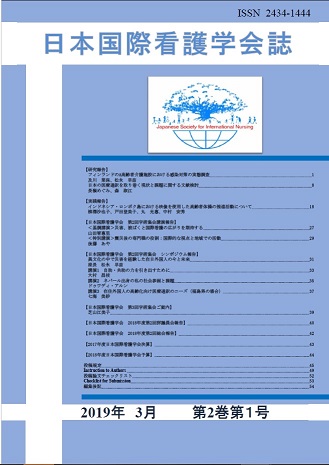Background:
As the Japanese government puts energy into tourism and schemes to accept more foreign workers to overcome a serious manpower shortage, the country is seeing a rapid increase in foreign visitors and residents. The natural result is that more non-Japanese speakers are coming to medical facilities. Medical interpreters are indispensable to ensure these patients receive treatment and nursing care without the anxiety of a language barrier. For this study on medical interpreters in this country, I reviewed available literature and discovered a need for clarification of the situation.
Objective:
To clarify the current state of medical interpreters in Japan and uncover tasks requiring attention.
Methods:
Using the Japanese medical database ICHUSHI (ver.5), I made a search using the keyword `medical interpreter' and analyzed the target literature using qualitative inductive analysis.
Results:
Four categories and seventeen sub-categories were extracted from 185 codes. The categories were (1) current status of forein patients requiring medical interpretation, (2) approach to language issues, (3) issues faced by medical interpreters, and (4) requirements for establishing a medical interpreting system.
Conclusion:
To deal with the issues faced by medical interpreters, Japan needs to work systematically. Establishing medical interpretation as a career by, for example standardizing qualifications, will be important to settingupa national system.
View full abstract
